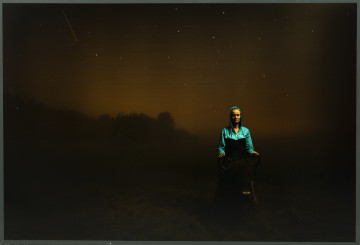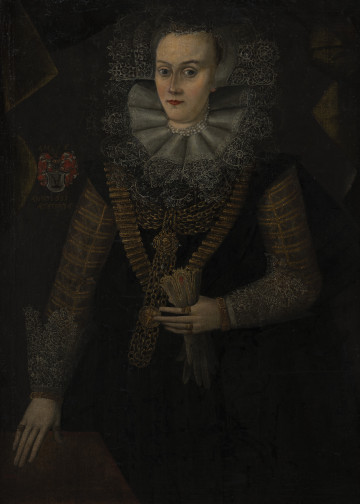
St. Mary Magdalene
1805 — 1814
National Museum in Szczecin
Part of the collection: Portrait painting
The work of Stanisław Wyspiański (1869-1907), characterised by an innovative language of artistic expression, is one of the outstanding phenomena in the art of Young Poland. It encompasses many areas, from painting, drawing and graphics, applied arts projects, through playwriting, poetry, stage design or drawing up plans for restoring historical monuments. In 1894, due to financial difficulties, the artist interrupted his stay in Paris and returned to Krakow, becoming actively involved in the bohemian life. At that time, he was a frequent guest at the house of Eliza and Stanisław Pareński on Wielopole Street, which served as a social salon, hosting famous writers, painters, actors and university professors. In 1900, the Pareńskis’ daughters - Maria and Zofia - were invited to Bronowice near Kraków to attend the wedding of Lucjan Rydel and Jadwiga Mikołajczykówna. Maria, the eldest of the sisters, became the prototype of Maryna, with whom the Poet (Kazimierz Przerwa-Tetmajer) flirts in the artist's drama. Pareńska married Jan Raczyński, an outstanding paediatrician. After his death, she married again, to a Russian lieutenant, Roman Jasieński. The marriage soon fell apart and Maria became involved with the doctor and art collector Jan Grek. In 1941, the Greeks, who lived in Lvov together with Zofia Pareńska's husband Tadeusz Boy-Żeleński, were arrested and, with a group of Lvov professors, murdered by the Germans on the Wuleckie Hills.
During his stay in Paris, Wyspiański began to abandon oil painting, discovering the secrets of pastel, which he used to create portrait studies. He portrayed the Pareńskis sisters - Maria, Zofia and the youngest Eliza - several times, depicting them in various angles. The portrait of eighteen-year-old Maria, like other portraits by the artist, combines elements of careful observation with psychological description of the sitter, whose figure is limited by a subtle, flexible line, characteristic of the artist. The gaze of the thoughtful girl, fixed on one point, escapes from the viewer into undefined space. Her face shows sadness, reverie and melancholy. The way of framing, with Maria in a bust-like profile and a neutral background devoid of details, focuses attention on her face, emphasising the intimate nature of the representation.
Anna Hałata
Author / creator
Dimensions
cały obiekt: height: 62,5 cm, width: 48 cm
Object type
drawing
Technique
pastel
Material
paper
Creation time / dating
Creation / finding place
Owner
The National Museum in Lublin
Identification number
Location / status

1805 — 1814
National Museum in Szczecin

2011
National Museum in Szczecin

1631
National Museum in Szczecin
DISCOVER this TOPIC
National Museum in Lublin
DISCOVER this PATH
Educational path